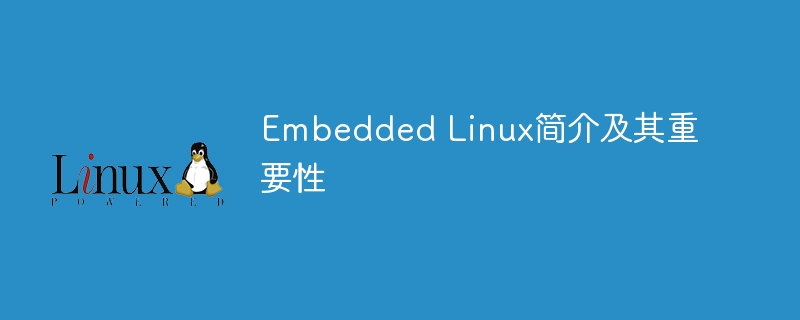
Embedded Linux简介及其重要性
Embedded Linux是一种嵌入式操作系统,通常用于嵌入式设备和嵌入式系统中。它是Linux内核和一些用户空间工具的组合,经过裁剪和优化以适应嵌入式设备的特定需求。
Embedded Linux的重要性在于它提供了一个强大而灵活的操作系统平台,可以运行在各种不同类型的嵌入式设备上,如智能手机、车载系统、智能家居设备、工业控制系统等。Embedded Linux可以帮助开发人员构建功能丰富且稳定的嵌入式系统,满足不同行业的需求。
嵌入式Linux系统通常由以下几个部分组成:Linux内核、根文件系统、应用程序和驱动程序。开发嵌入式Linux系统需要考虑以下几个方面:
内核定制: 需要根据具体的设备需求选择适当的内核版本,并对内核进行裁剪和定制,使其仅包含所需的功能和驱动程序,以减少系统资源占用。 根文件系统: 根文件系统包含系统启动所需的文件和配置信息,开发人员需要根据具体需求构建和优化根文件系统,确保系统启动顺利并占用较小的存储空间。 应用程序开发: 开发嵌入式应用程序通常需要使用交叉编译工具链,确保应用程序能够在目标设备上正确运行,并充分利用设备的功能。 驱动程序开发: 驱动程序是连接硬件和操作系统的桥梁,开发适合特定硬件设备的驱动程序对于嵌入式系统的稳定性和性能至关重要。以下是一个简单的嵌入式Linux示例程序,使用了一个基本的字符设备驱动程序:
#include <linux/module.h> #include <linux/fs.h> #include <linux/init.h> #include <linux/uaccess.h> #define DEVICE_NAME "my_device" #define BUF_SIZE 1024 static char buffer[BUF_SIZE]; static int major; static int my_device_open(struct inode *inode, struct file *file) { printk(KERN_INFO "Device opened "); return 0; } static int my_device_release(struct inode *inode, struct file *file) { printk(KERN_INFO "Device closed "); return 0; } static ssize_t my_device_read(struct file *file, char *buf, size_t count, loff_t *ppos) { if (copy_to_user(buf, buffer, count)) { return -EFAULT; } return count; } static ssize_t my_device_write(struct file *file, const char *buf, size_t count, loff_t *ppos) { if (copy_from_user(buffer, buf, count)) { return -EFAULT; } return count; } static struct file_operations fops = { .open = my_device_open, .release = my_device_release, .read = my_device_read, .write = my_device_write, }; static int __init my_device_init(void) { major = register_chrdev(0, DEVICE_NAME, &fops); if (major < 0) { printk(KERN_ALERT "Failed to register device "); return major; } printk(KERN_INFO "Device registered with major number %d ", major); return 0; } static void __exit my_device_exit(void) { unregister_chrdev(major, DEVICE_NAME); printk(KERN_INFO "Device unregistered "); } module_init(my_device_init); module_exit(my_device_exit); MODULE_LICENSE("GPL"); MODULE_AUTHOR("Your Name"); MODULE_DESCRIPTION("A simple character device driver");以上示例程序实现了一个简单的字符设备驱动程序,可以在嵌入式Linux系统中使用。开发嵌入式Linux系统需要深入了解Linux内核和用户空间工具的使用方法,同时需要考虑设备的特殊需求和性能要求,才能构建稳定、高效的嵌入式系统。Embedded Linux作为一种强大的嵌入式操作系统平台,将在未来的嵌入式系统开发中扮演越来越重要的角色。
以上就是Embedded Linux简介及其重要性的详细内容,更多请关注知识资源分享宝库其它相关文章!
版权声明
本站内容来源于互联网搬运,
仅限用于小范围内传播学习,请在下载后24小时内删除,
如果有侵权内容、不妥之处,请第一时间联系我们删除。敬请谅解!
E-mail:dpw1001@163.com












发表评论